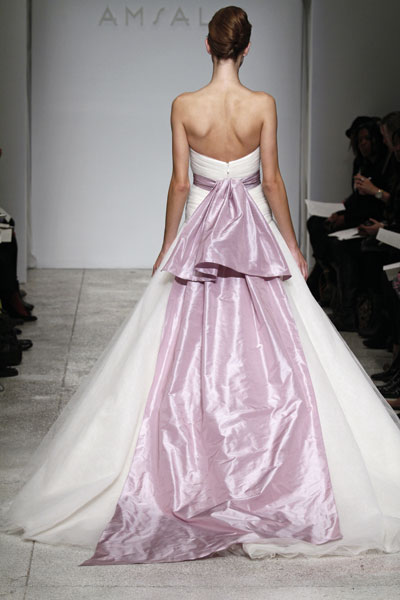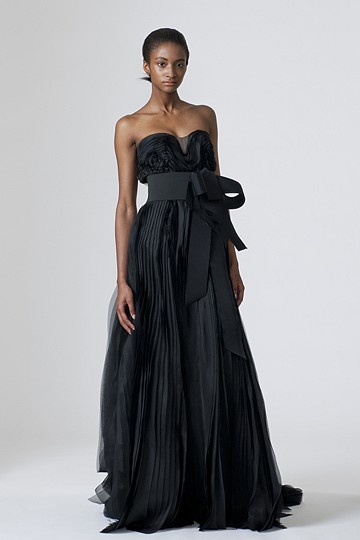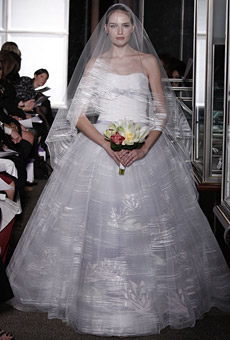The Color of the Gown

The color of a gown was a popular source of luck. Those who rely on their happiness and superstition had to select the right color gown. White, or a variation of white, was a favorite and symbolized a girl’s virginity and innocence in the face of her imminent change of state. But it was not a practical shade for most purposes and it was not always the favorite choice. Blue, with its associations with the Virgin Mary, was another strong symbol of purity, which also traditionally symbolized fidelity and eternal love (hence the popularity of the sapphire in engagement rings). Brides who wore blue believed their husbands would always be true to them, so even if their gown itself was not blue, they would be sure to wear something blue. This is another tradition that has survived to this day.
Pink was another popular color, considered most suitable for a May wedding. It is flattering to most complexions and associated with girlhood, but some superstitions held it to be unlucky – “Marry in pink and your fortunes will sink”! The deeper shade of red was definitely taboo by Victorian times, with its reference to scarlet women and hussies. An unpopular shade was green. This was considered the fairies color, and it was bad luck to call the attention of the little folk to oneself during a time of transition. Also linked with the lushness of foliage, it was held to make rain spoil the big day.
Do you think Vera Wang did her homework prior to introducing so many wedding gowns in various colors. Although the modern bride might be willing to step out of the box, her guests may be left to wonder! We’ll have to wait to see if anyone is daring enough to make Vera’s new collection flourish or will it flop. Let’s face it, tradition is still expected and with so many options we’ll see if tradition is still most important.

Up until the nineteenth century ribbons would be tied into bows or “love knots” and loosely attached to the dress. These “bride laces” would be pulled off by the guests during the post ceremony festivities, and kept as wedding favors, or souvenirs. This custom gradually died out, being replaced by flowers instead. Guests would be given floral button-holes to wear, and the bride might wear flowers in her hair or as a corsage or garland around her skirts, or else carry them in a bouquet. Rosemary and myrtle were early favorites, and orange blossom became popular in the 1830s. The floral tradition lives on and most brides, no matter how simply dressed, will have a flower in her hair or carry a bouquet.


